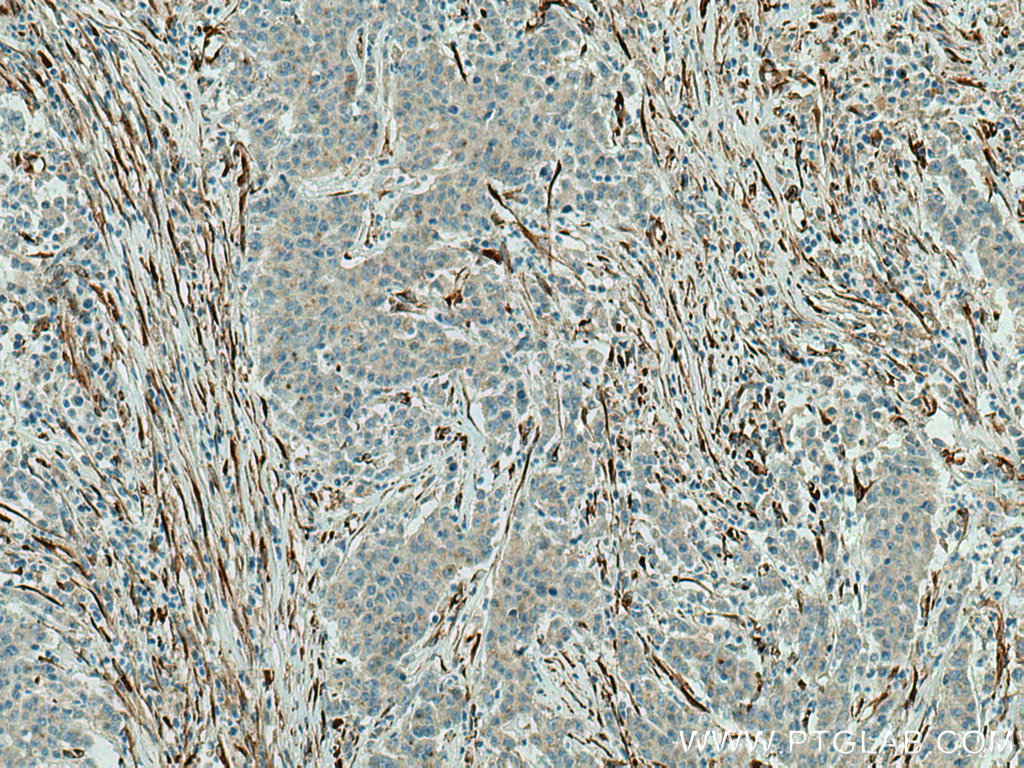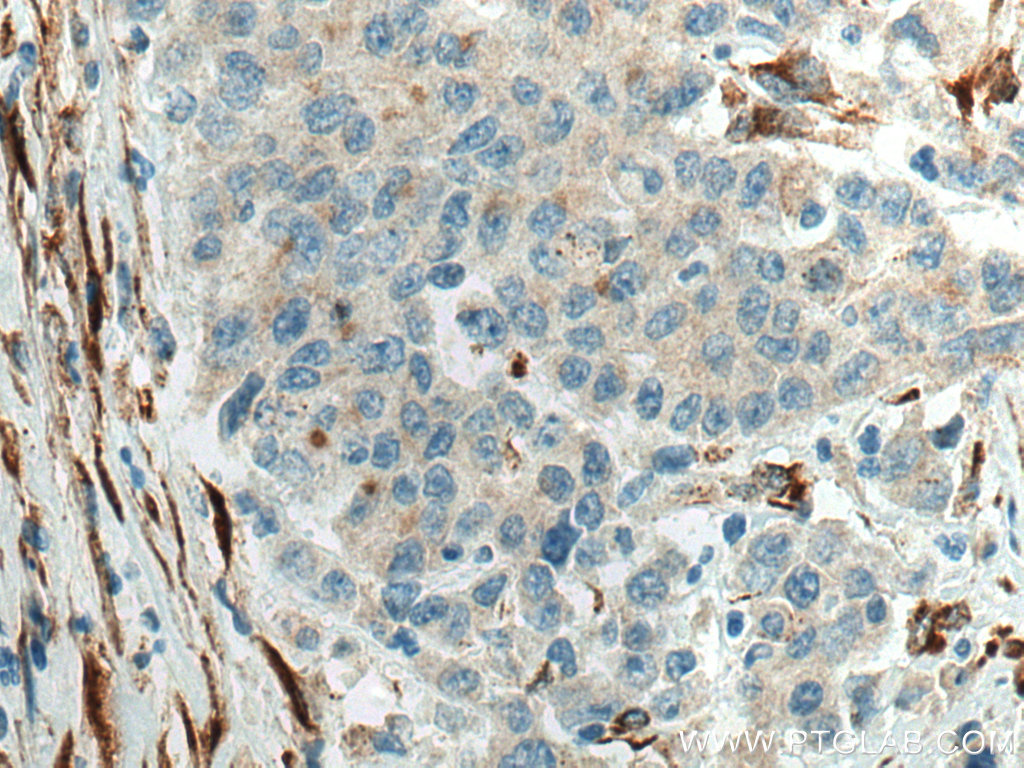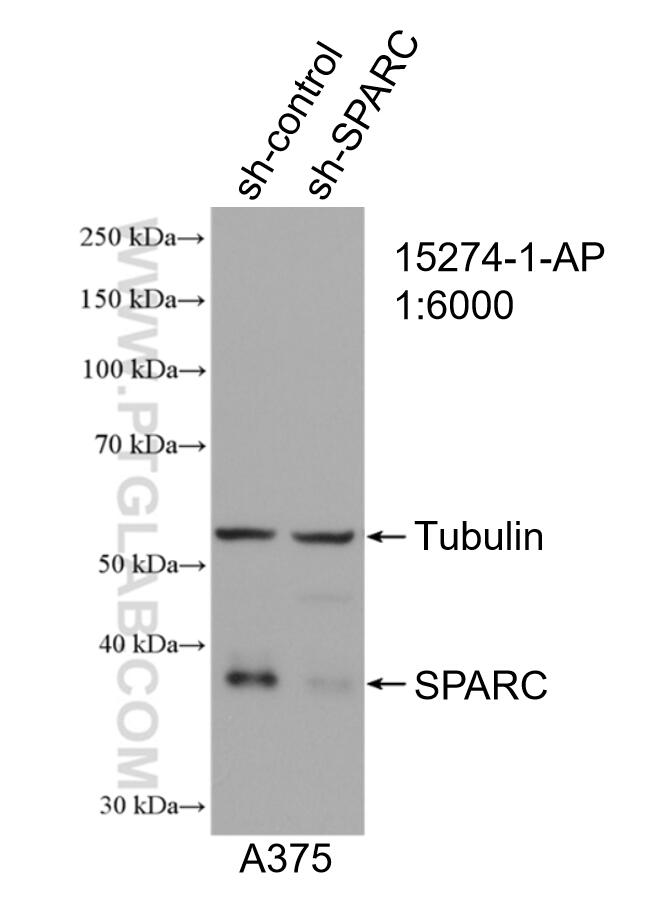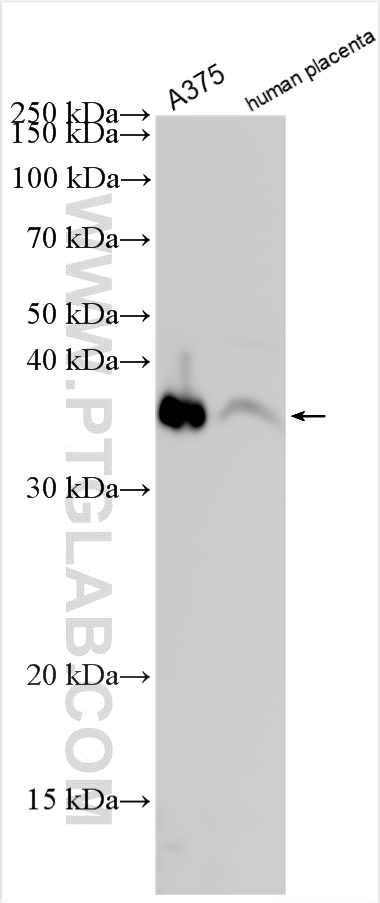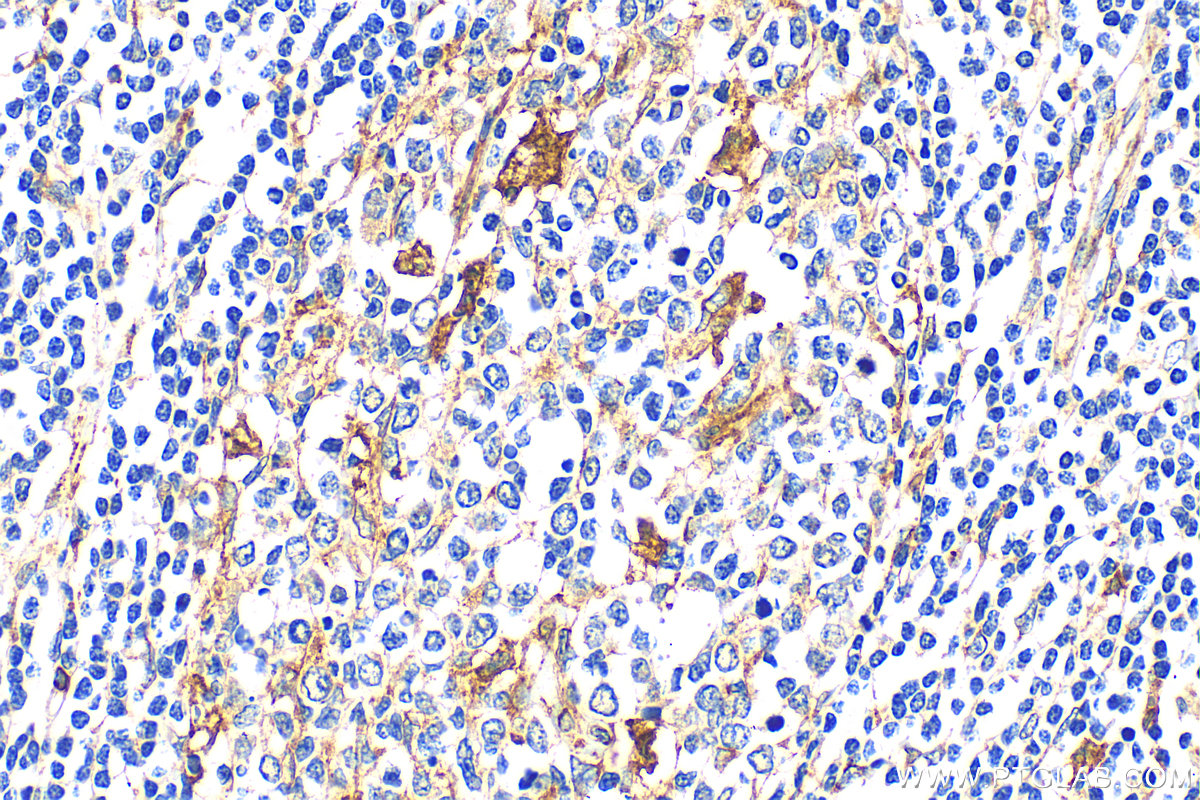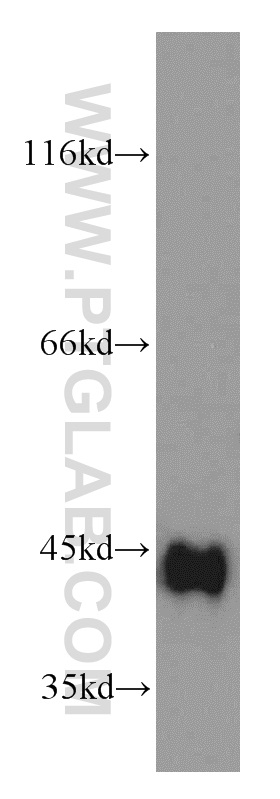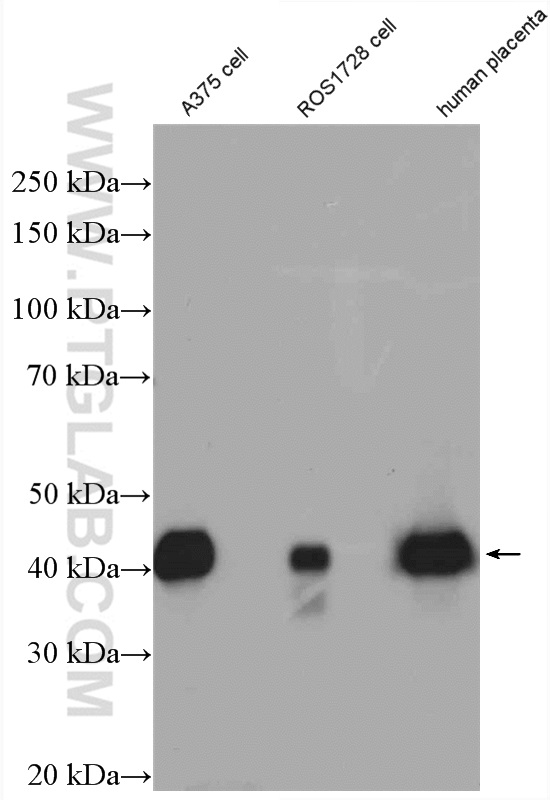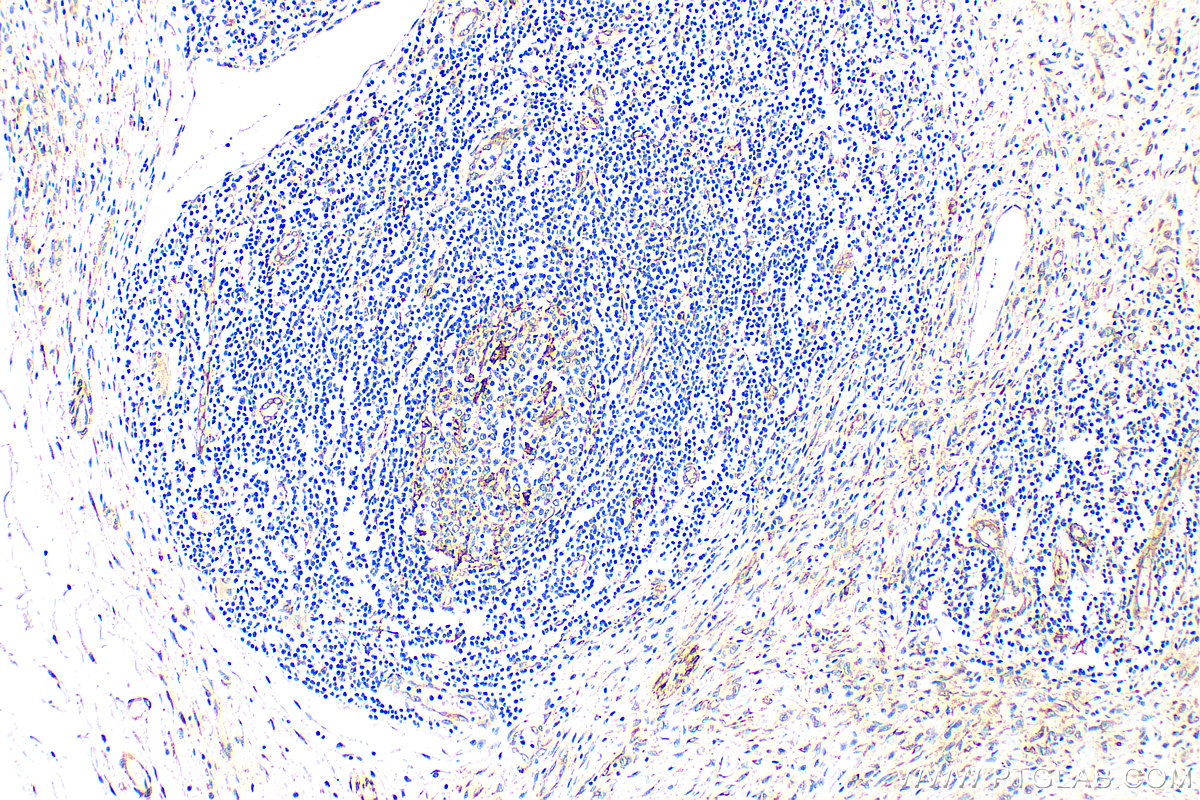验证数据展示
经过测试的应用
| Positive WB detected in | A375 cells, human testis tissue, ROS1728 cells, human placenta tissue |
| Positive IHC detected in | human stomach cancer tissue Note: suggested antigen retrieval with TE buffer pH 9.0; (*) Alternatively, antigen retrieval may be performed with citrate buffer pH 6.0 |
推荐稀释比
| 应用 | 推荐稀释比 |
|---|---|
| Western Blot (WB) | WB : 1:1000-1:8000 |
| Immunohistochemistry (IHC) | IHC : 1:1000-1:4000 |
| It is recommended that this reagent should be titrated in each testing system to obtain optimal results. | |
| Sample-dependent, Check data in validation data gallery. | |
产品信息
15274-1-AP targets SPARC in WB, IHC, IF, CoIP, ELISA applications and shows reactivity with human, mouse, rat, pig samples.
| 经测试应用 | WB, IHC, ELISA Application Description |
| 文献引用应用 | WB, IHC, IF, CoIP |
| 经测试反应性 | human, mouse, rat, pig |
| 文献引用反应性 | human, mouse, rat, deer, sika deer |
| 免疫原 | SPARC fusion protein Ag7390 种属同源性预测 |
| 宿主/亚型 | Rabbit / IgG |
| 抗体类别 | Polyclonal |
| 产品类型 | Antibody |
| 全称 | secreted protein, acidic, cysteine-rich (osteonectin) |
| 别名 | Osteonectin, ON, BM-40, BM 40, Basement-membrane protein 40 |
| 计算分子量 | 35 kDa |
| 观测分子量 | 35-43 kDa |
| GenBank蛋白编号 | BC004974 |
| 基因名称 | SPARC |
| Gene ID (NCBI) | 6678 |
| RRID | AB_2194961 |
| 偶联类型 | Unconjugated |
| 形式 | Liquid |
| 纯化方式 | Antigen affinity purification |
| UNIPROT ID | P09486 |
| 储存缓冲液 | PBS with 0.02% sodium azide and 50% glycerol , pH 7.3 |
| 储存条件 | Store at -20°C. Stable for one year after shipment. Aliquoting is unnecessary for -20oC storage. |
背景介绍
Secreted Protein Acidic And Cysteine Rich (SPARC), also known as osteonectin or basement-membrane protein 40 (BM-40), is a secreted protein essential in the calcification of bone.
What is the molecular weight of SPARC?
The calculated molecular mass of SPARC is 35 kDa. SPARC is a glycoprotein consisting of 303 amino acids in the cytoplasm and 286 amino acids after the signal sequence is cleaved in secretion.
Where is SPARC expressed?
Osteoblasts secrete SPARC during bone formation, with high levels found in immature bone compared to mature bone that is in homeostasis (PMID: 2440898). SPARC is also secreted in adult mineralized tissues that have high turnover, such as osteoid and dentin, by cells other than osteoblasts. This includes bone marrow progenitor cells and hypertrophic chondrocytes but also endothelial cells and fibroblasts.
Though previously described as being exclusively expressed in mineralized tissue, it is now understood that SPARC is more widely expressed and is associated with high levels of collagen deposition, found in the extracellular matrix (ECM) of a number of tissues.
What is the function of SPARC?
SPARC contains both a collagen-binding domain and a hydroxyapatite (HA) binding region, so is thought to enhance mineralization by binding both collagen and HA crystals, causing the release of calcium ions (PMID: 26851678).
SPARC can bind to a number of different ECM proteins, particularly collagen, and may even influence the assembly of these proteins (PMID: 19798598). It is known to regulate interactions between cells and the ECM, meaning it plays a role in many important processes such as cell migration and proliferation.
What diseases are associated with SPARC?
Overexpression of SPARC has been identified in a number of different types of cancers (PMID: 18849185), although its role may vary. For example, in neuroblastomas SPARC acts as a suppressor but in gliomas, it causes greater invasion of the tumor. Mutations in SPARC can also lead to Osteogenesis Imperfecta, also known as brittle bone disease (PMID: 26027498).
实验方案
| Product Specific Protocols | |
|---|---|
| WB protocol for SPARC antibody 15274-1-AP | Download protocol |
| IHC protocol for SPARC antibody 15274-1-AP | Download protocol |
| Standard Protocols | |
|---|---|
| Click here to view our Standard Protocols |
发表文章
| Species | Application | Title |
|---|---|---|
ACS Appl Mater Interfaces Evidence for Delivery of Abraxane via a Denatured-Albumin Transport System. | ||
Theranostics A 9-kDa matricellular SPARC fragment released by cathepsin D exhibits pro-tumor activity in the triple-negative breast cancer microenvironment. | ||
Int J Cancer Tissue-resident CXCR4+ macrophage as a poor prognosis signature promotes pancreatic ductal adenocarcinoma progression | ||
